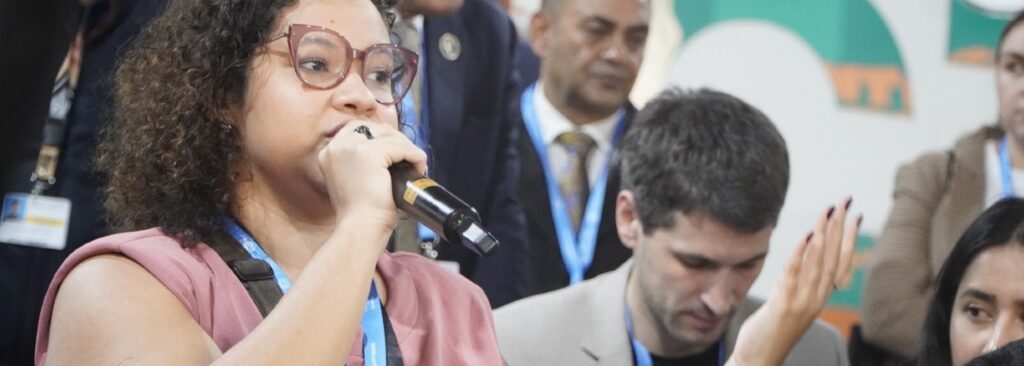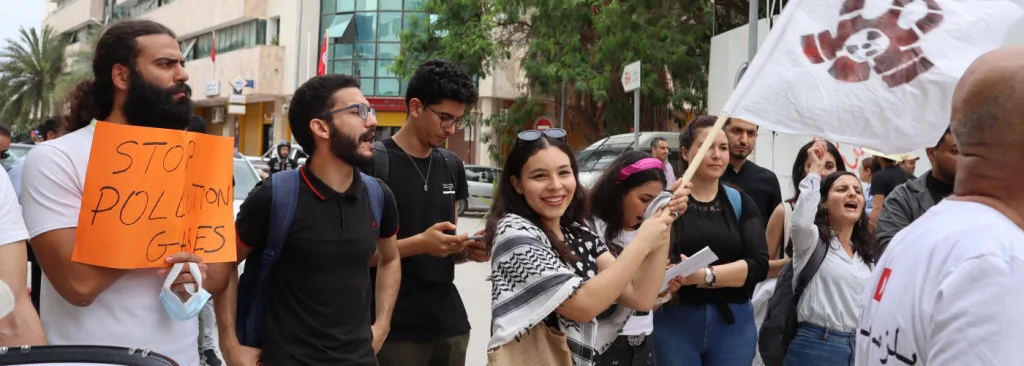We’ve asked our climate finance specialist Collins Otieno to tell us what’s happening at the second biggest annual climate meeting, the Subsidiary Bodies meeting in Bonn, and why it’s important.
“Working with communities has shown that unless finance is inclusive, solutions are locally led, and processes are transparent and responsive to local needs, very limited outcomes can be expected.”
What is SB and why is it important?
“The United Nations Framework Convention on Climate Change (UNFCCC) hosts two annual meetings. The first is the Conference of Parties, widely known as COP; this is the topmost decision-making body of the convention. The second is the Subsidiary Bodies (SB), which provides technical and scientific advice to adequately support the COP in its decisions.
The Subsidiary Bodies consist of two permanent bodies that meet twice a year, once in Bonn and during the COP. These bodies include the Subsidiary Body for Scientific and Technological Advice (SBSTA), which provides scientific and technical assessments and supports the COP by reviewing climate data, methodologies, and technology transfer. Then the Subsidiary Body for Implementation (SBI), which amongst other things focuses on implementation and review of the Convention and deals with capacity-building, transparency, and financial mechanisms.”
How does the work in Bonn relate to COP30 in Belém this year?
“In most spaces you hear ‘Bonn is the Bridge.’ To put it simply, Bonn aligns the technical groundwork with the political commitments that are to be made at COP. It’s where the blueprints for climate action are drawn, and at COP – this year is the 30th edition in Belém – they are expected to be accepted and adopted.
For instance, on the table in Bonn this year are the indicators for the Global Goal on Adaptation (GGA). Over the past few years, countries of the UNFCCC have been developing measurable indicators to track climate adaptation progress under the Paris Agreement. Contextually, adaptation is local. Meaning, every country may have different indicators based on their needs and context. So harmonizing these indicators for ease of tracking and reporting implementation is critically important for decision making in COP30 in Belém, where a formal GGA framework is expected to be adopted.
Climate finance is also expected to take center stage in Bonn. At COP29 in Baku last year, the New Collective Quantified Goal on Climate Finance (NCQG), a new global climate finance target for addressing climate crisis, was established. Along with it came the Baku to Belem roadmap: an ambitious plan to allow for mobilization of USD 1.3 trillion annually.
Diversification of sources for financial mobilization, tracking of mobilization, and other qualitative elements are therefore being considered in Bonn to set a base line for what will be decided in Belém regarding formal adoption of the NCQG implementation framework.
Other items being discussed in Bonn include advancing frameworks that ensure fair and inclusive climate transitions, preparations for the second Global Stock Take (assessing the progress between 2026–2028), and implementing recommendations from the first Global Stocktake, such as transitioning away from fossil fuels and scaling up renewable energy.”
How does all this relate to local climate action?
“Though seldom spotlighted, the bond between the Subsidiary Bodies, the Conference of the Parties, and local climate action is profound and tightly connected. For instance, the technical advice from this meeting to COP30 on the Global Goal on Adaptation will not only shape locally led adaptation actions but will also determine to a larger extent whether frontline communities will become less vulnerable, adaptive capacity will improve, and resilience will be created. Similarly to climate finance, not only are quantities defined, but also the means of delivery, transparency and accountability that largely shape local level climate action.
Likewise, technical advice from these bodies is expected on the Just Transition Work Programme (JTWP) – an initiative that supports countries in designing and implementing fair and inclusive pathways to achieve the goals of the Paris Agreement. This means advancing frameworks that ensure social protection, labor rights, and equity across energy, economic, and workforce transitions. The outcomes of the JTWP are not only critical for protecting livelihoods and cultures of local communities and Indigenous Peoples, but also for addressing historical injustices, creating equitable green jobs, and ensuring the participation of these groups as well as building resilient local economies.”
In what ways are local communities and Indigenous people represented in these negotiations?
“While these meetings are often seen as technical and high-level, the space for grassroots voices is increasing. For example, through the Local Communities and Indigenous Peoples Platform (LCIPP), established at COP21 in Paris and formally operationalized at COP24 in Katowice. The LCIPP is designed to strengthen the knowledge, technologies, practices, and efforts of local communities and Indigenous Peoples related to addressing and responding to climate change. It also facilitates the exchange of experiences and best practices and promotes the full and effective participation of Indigenous Peoples and local communities in the UNFCCC process.
The LCIPP has national structure through which local communities and Indigenous Peoples can engage, but (digital) advocacy and mobilization remains important for influencing.”
So, what should the technical team at Bonn consider?
“Science is evidence, and evidence should be grounded in community-lived experiences, especially in the fields of climate change and environmental justice. Working with communities has shown that unless finance is inclusive, solutions are locally led, and processes are transparent and responsive to local needs, very limited outcomes can be expected. Accordingly, the Bonn technical teams must take community-lived experiences into account when shaping important frameworks like the Just Transition Work Programme, the Gender Action Plan and the GGA indicators.”
Collins Otieno is a Climate Finance and Innovations Officer at Hivos and a certified policy analyst with extensive experience in climate finance, having worked in the sector for over eight years.




